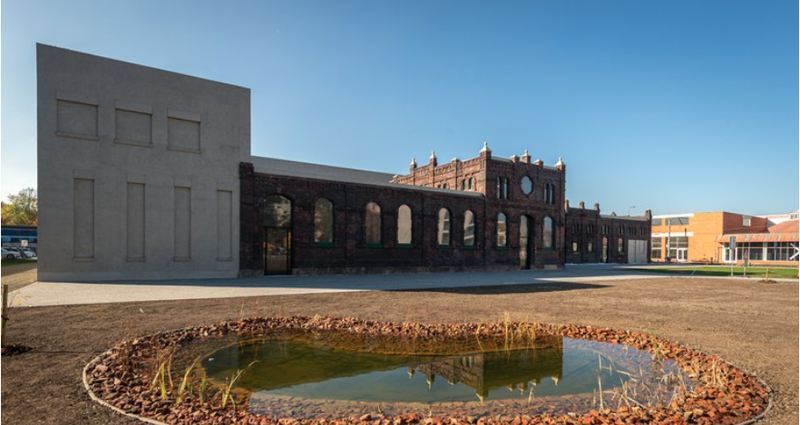
RECONSTRUCTION OF OSTRAVA SLAUGHTERHOUSE IN THE FINAL OF A PRESTIGIOUS EUROPEAN COMPETITION
The project to convert the historic slaughterhouse into the contemporary art gallery PLATO once again excels in the European Union Prize for Contemporary Architecture – Mies van der Rohe Award. After advancing to the narrower nomination selection in January, it has now made it to the final seven, or rather, five. No Czech construction has been this successful in the past.

Jury members placed the slaughterhouse conversion into the final five in the Architecture category, initially selecting from a total of 362 nominated projects. Two other finalists will compete for the top spot in the Discovery category. The jurors will personally visit each of the constructions in the final selection during April, and on the 25th, they will decide on the winner. The award ceremony, with the announcement of the main prize, will take place in May at the Mies Pavilion in Barcelona.
The European Union Prize for Contemporary Architecture – Mies van der Rohe Award is presented biennially. Evaluators select buildings across Europe, designed by architects from European countries (not just EU Member States). The award was first presented in 1988, and most recently – in 2022 – it was received by the British architectural office Grafton Architects for the Town House building at Kingston University.
The conversion of the historic slaughterhouse into a gallery emerged from a design by KWK Promes, a studio of Polish architect Robert Konieczny, in the style known as moving architecture. The unique rotating walls change the spatial perception of the interiors, bringing visitors closer to both the building and the respective gallery exhibitions.
This is far from the only architectural success that the slaughterhouse conversion has claimed to its credit. Just last year, it received two awards for heritage conservation as part of the National Heritage Institute’s Patrimonium pro futuro Prize and the Grand Prix of Architects 2023 in the reconstruction category.
The slaughterhouse complex was established in 1881 and underwent modernisation in 1890 and 1924–27. The slaughterhouse ceased its original function in 1965, subsequently falling into disrepair. Since December 1987 (tower) and September 1994 (tower with adjacent buildings) respectively, the complex has been protected as a cultural monument.
